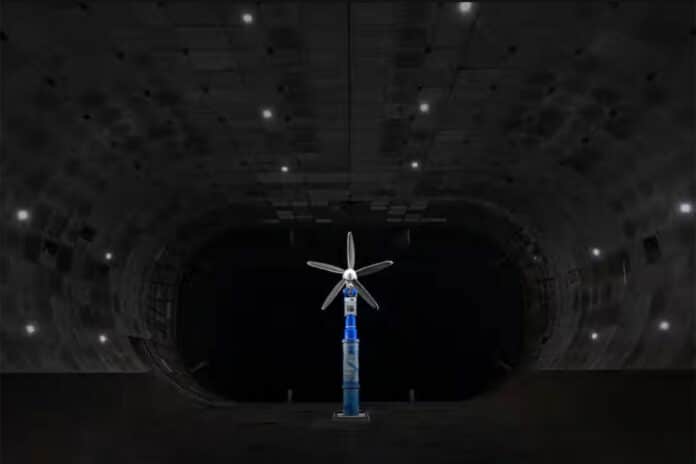The California-based air taxi maker Joby Aviation has begun testing its eVTOLs at the National Full-Scale Aerodynamic Complex (NFAC), the world’s largest wind tunnel facility, at NASA’s Ames Research Center in California’s Silicon Valley.
The NFAC contains the two largest operational wind tunnels in the world. Data from propeller testing in the NFAC – widely considered the gold standard for aircraft aerodynamics and performance – was instrumental in developing a range of iconic vehicles, including the space shuttle, the V-22 Osprey, the F-35 Joint Strike Fighter, and a number of next-generation helicopters.
The company is believed to be the first electric vertical take-off and landing (eVTOL) company to test its propeller in the NFAC’s 40-by-80-foot wind tunnel.
“Testing is a critical part of our aircraft program, and the opportunity to gather data on the performance of our propellers in one of the world’s largest wind tunnels is an exciting step toward commercialization,” said JoeBen Bevirt, Founder and CEO of Joby. “This facility helped introduce historic aircraft to the world, and now it’s doing the same for the next generation of sustainable aviation.”
The test campaign will cover all tilt angles and speeds through the expected flight envelope. This will provide Joby with consistent and high-fidelity data on the performance, loads, and acoustics of its propeller systems in support of its certification program with the Federal Aviation Administration (FAA).
Joby will have support not just from NASA but also from the U.S. Air Force throughout. Working with them, Joby is installing a production-intent electric propulsion unit and propeller assembly in the wind tunnel mounted to a six-degree-of-freedom force and moment balance to capture performance data. The blades are instrumented to measure the loads experienced while rotating, and a representative wing section of the Joby aircraft allows careful analysis of aerodynamic interference effects.
The full NFAC propeller test campaign is expected to take several months to complete, producing data of unparalleled quality.
Joby and NASA previously partnered on a variety of projects exploring electric aircraft technology, including the design of the agency’s all-electric X-57 Maxwell prototype.
Joby’s piloted, all-electric aircraft is designed to offer a faster and quieter method of aerial transportation across cities and communities with zero operating emissions and has completed more than 1,000 test flights. Joby expects to launch a commercial aerial ridesharing service in the United States in 2025.
